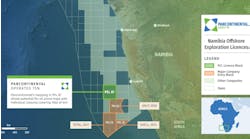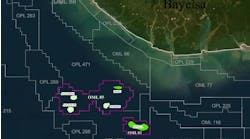Offshore staff
SILVER SPRING, Maryland– Multiple industry organizations teamed up to respond to an updated draft of the US National Marine Fisheries Service's (NMFS) guidance regarding the effects of certain sounds on marine mammal hearing.
The International Association of Geophysical Contractors (IAGC); the National Ocean Industries Association; the American Petroleum Institute (API); and the Alaska Oil & Gas Association all jointly submitted their comments to the chief of the NMFS' Marine Mammal and Sea Turtle Conservation Division.
These guidelines will be used by federal agencies, industry, and others conducting activities that generate underwater noise, such as military testing and oil and gas exploration, the US National Oceanic and Atmospheric Administration’s (NOAA) Fisheries service said. The administration pointed to noise created by seismic airguns as one of the activities with the greatest potential to affect marine mammals.
The first draft was presented for public comment in 2013.
“[T]he associations recognize that the topic of marine sound and its potential impacts on marine mammals are complex and informed by an evolving base of scientific knowledge, and we appreciate the challenges and effort associated with translating the available information into functional guidance criteria,” the associations said, noting that they have been “fully engaged” with NOAA in evaluating and the two previous drafts.
However, the groups believed that some of the changes in the latest draft were too drastic, and that changes were incorporated “in a manner that is not comprehensive, transparent, or consistent with the best available science.” In the letter, they request NOAA to retract its most recently proposed changes and engage in “a peer review process applicable to highly influential scientific assessments.”
“These proposed changes, if finalized, will also not be meaningfully informed by the public. NOAA’s proposed changes are substantial, significant, and result in very different criteria than were proposed in the 2015 version of the draft guidance,” the associations said.
Among their comments, the groups said that the proposed changes are “incompletely documented and insufficiently explained.” They take particular issue with proposed changes to low-frequency cetaceans saying that they are “arbitrary and contrary to the best available science.”
For its part, NOAA said that it “compiled, interpreted, and synthesized best available information currently available on the effects of anthropogenic sound on marine mammals” to develop the guidelines.
“Rather than rushing significant changes to the draft guidance through an uninformed process, NOAA should be seeking to “ensur[e] and maximiz[e] the quality, objectivity, utility, and integrity” of the draft guidance, as required by the Information Quality Act,” the associations commented.
The groups also said that NOAA provided an “insufficient” amount of time for review.
On March 22, the IAGC and API jointly wrote the chief of the NMFS, asking for the agency to extend the public comment period. Officials from the organizations pointed out that the public commenting periods on previous drafts lasted several months, while the commenting period for the third and most recent recent draft lasted 14 days. It concluded at the end of March.
Signed by Andy Radford of API and Dustin Van Liew of IAGC, the organizations requested an additionaly 30 days, although noting that they understood the NMFS is “not inclined to grant [this] extension."
“[W]e respectfully suggest that additional time for public review and comment is appropriate considering the significance of the newly proposed revisions and the complexity of the issue, as demonstrated by NMFS’ multi-year effort in developing this guidance," the letter read.
04/01/2016


